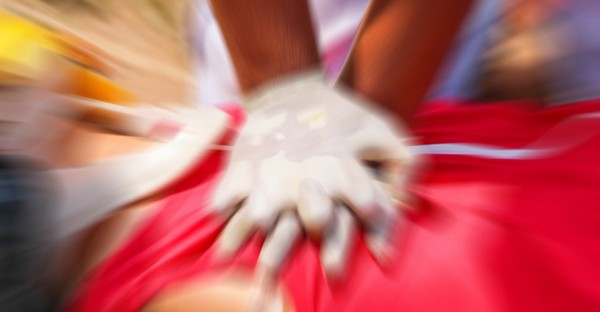Putting Your Safety First When Responding to an Emergency
June 25, 2018 at 3:12 PM

When people are injured or suddenly fall ill, the scene around them is often chaotic. Concerned bystanders, family members and emergency services personnel are all reacting and responding to the incident simultaneously, and the incident scene itself may pose dangers. An emergency care provider knows to put his or her own safety first, even before the safety of an ill or injured person.
Putting yourself in danger to help someone can make the situation worse, both for yourself and for those around you. When responding to an emergency: your safety starts with SETUP. This mnemonic device can help you remember the important points of making sure it is safe to provide care:
- S Pause to identify hazards
- E Consider your surroundings
- T Be careful along roadways
- Unknown hazards. Consider things that are not apparent
- Personal safety. Use protective barriers
- Always pause for a moment before approaching an emergency and look for obvious hazards. Consider the possibility of hidden dangers. If the scene is unsafe, do not approach. If the location you are already in becomes unsafe, get out!
When caring for someone, a provider can be exposed to blood or other potentially infectious body fluids. While the risk of contracting a disease is extremely low, it is prudent to take simple measures to avoid exposure in the first place:
- Disposable gloves are the most commonly used barrier. Make sure there is always a fresh supply of non-latex gloves in your first aid kit. Inspect gloves for damage or tears when putting them on. If damaged, replace them immediately.
- After providing care, always remove contaminated gloves carefully. Even after using gloves, use soap and water to clean your hands and any exposed skin. Use an alcohol-based hand sanitizer if soap and water are not available.
- If a person requires rescue breaths, use a shield or CPR mask with a one-way valve to minimize direct mouth-to-mouth contact. A face shield can prevent mouth, nose, and eye exposure when there is a possibility of splashing or spraying.
- If you don’t have personal protective equipment during a first aid situation, you can improvise. A towel, plastic bag, or some other barrier can help avoid direct contact.
- SETUP for success and remember to put your own safety first in an emergency situation.
Want to learn more about how you can save and protect a life. Call us today 0800 11 21 31 or visit www.medicfirstaid.co.nz for first aid courses available in your area.
Blog Source
![]()




